Transcription of How to prevent, identify and treat phlebitis in patients ...
1 18 Nursing Times / Vol 107 No 36 / PracticeReviewPhlebitisAuthor Ray Higginson is chartered biologist and senior lecturer in critical care, and Andrew Parry is senior lecturer in critical care; both at the Faculty of Health, Sport and Science, University of Glamorgan, Higginson R, Parry A (2011) phlebitis : treatment, care and prevention. Nursing Times; 107: 36, venous catheter-associated phlebitis is caused by inflammation to the vein at a cannula access site. It can have a mechanical, chemical or infectious cause. Good practice when inserting a cannula, including appropriate choice of device and site, can help to prevent phlebitis . Good infection control techniques are also vital in preventing the condition. There are two phlebitis scoring systems, which should be used in routine practice to identify and treat early signs of the venous cannulation (PVC) is a common procedure carried out in hospital to allow rapid and accurate administra-tion of medication (Endacott et al, 2009).
2 However, the placement of an intravenous cannula can have undesirable effects, the most common of which is phlebitis . Peripheral catheter-related phlebitis is caused by the inflammation of the tunica intima of a superficial vein. The inflamma-tion is due to irritation of the tunica intima by mechanical, chemical or bacterial Keywords: phlebitis /Venous catheter/Infection control This article has been double-blind peer reviewed5 key points 1 Peripheral venous cannulation is a common procedure2 phlebitis or inflammation of the vein can be caused by mechanical, chemical or infectious irritation at the cannula site3 Careful placement and good hygiene can help to prevent phlebitis4 There are two assessment tools to identify early signs of the condition5 Vigilance can help to prevent rare but potentially severe complications such as sepsis sources. If left untreated, it can lead to infection or thrombus formation (Royal College of Nursing, 2010).
3 It is estimated that in the UK 20-80% of patients with a PVC develop phlebitis (Pan-dero et al, 2002). This broad range has also been reported in studies from other coun-tries (Uslusoy and Mete, 2008) and sug-gests poor identification of phlebitis or poor reporting protocols. It is essential for nurses to be able to identify patients who are at risk of devel-oping phlebitis . In turn, early recognition will enable prompt intervention, mini-mising disruption to intravenous therapy Intravenous therapy is indicated for many reasons. A significant number of patients admitted into hospital receive some form of intravenous therapy via PVC. These include intravenous antibiotic administration, intravenous fluids, intra-venous pain relief and/or total parenteral nutrition (TPN). Intravenous delivery devices include: Peripheral cannulas; Peripheral midline catheters; Peripherally inserted central catheters; Skin tunnelled cuffed central catheters (Hickman lines).
4 The type of intravenous delivery device used depends on the type of fluid adminis-tered and the length of time intravenous therapy will last. For example, peripheral venous cannulas are indicated for In this Peripheral venous cannulation is a common procedure used in hospital to deliver fluid and medicine phlebitis (inflammation of the vein) can be caused by chemical, mechanical or infectious irritation Good practice with cannula insertion and infection control should help to prevent the conditionColoured venogram of phlebitis in legHow to prevent, identify and treat phlebitis in patients with a venous cannulaPhlebitis: treatment, care and / Vol 107 No 36 / Nursing Times 19inappropriate catheter insertion sites and inappropriate catheter usage. In addition, a poor standard of infection control has a part to play and infection control and hygiene standards are essential in the treatment and prevention of the condition (Uslusoy and Mete, 2008).
5 PhlebitisMechanical phlebitisMechanical phlebitis occurs where the movement of a foreign object (cannula) within a vein causes friction and subse-quent venous inflammation (Stokowski et al, 2009) (Fig 1). It often occurs when the size of the can-nula is too big for the selected vein (Mar-tinho and Rodrigues, 2008). It has also been suggested that placement of a can-nula near a joint or venous valve will increase the risk of mechanical phlebitis due to irritation of the vessel wall by the tip of the cannula (Macklin, 2003). This type of phlebitis can be avoided by selecting the smallest possible device for the largest vessel (although some studies such as Uslusoy and Mete (2008) have sug-gested that catheter size is not a significant causative factor). Consideration must also be given to the nature of the intended IV therapy and optimum cannula size for drug delivery. For example, a large-bore cannula would be appropriate for rapid fluid resuscitation while a cannula with a smaller bore would suffice for sliding scale insulin phlebitisChemical phlebitis is caused by the drug or fluid being infused through the cannula.
6 Factors such as pH and osmolarity of the substances have a significant effect on the incidence of phlebitis (Kohno et al, 2009) (Figs 2 and 3). box 2. UNiVeRsAl iNfeCTioN CoNTRol meAsURes Handwashing Patient skin preparation Wearing gloves and aprons Establishing a clean environmental field Using sterile equipment Disposing of contaminated or soiled equipment and linen appropriately Safe disposal of sharpsfig 1-3. TyPes of PhlebiTisports), and reduce the risk of cross-infec-tion (Hart, 2007). An aseptic technique is necessary when performing any clinically invasive proce-dure, especially if the patient has an infec-tious disease. It is, of course, indicated when delivering intravenous therapy, be it cannula insertion, intravenous drug or fluid administration (Randle et al, 2009). phlebitis has been linked with short-term use only (Dougherty and Lister, 2008). If intravenous therapy is indicated for longer periods, central venous access will be required.
7 Likewise, central access is required if cytotoxic and/or hypertonic solutions are to be intravenously adminis-tered (RCN, 2010). infection control Microorganisms gain access to new hosts via a variety of methods, with some microbes using more than one method of transmission. Microorganisms are not able to move freely between hosts by them-selves they require either direct physical contact with a new host, or they use another person, animal or inanimate object, to gain access. Understanding these direct and indi-rect modes of transmission is essential for effective infection control (Box 1).Clinical staff, especially those in close physical contact with patients , can act as a portal for disease-causing organisms, facilitating their spread between patients and the clinical environment. An unhy-gienic environment can harbour micro-organisms and facilitate their contamina-tion and spread (Randle et al, 2009).
8 Infection control measures are essential in the fight against disease-causing microbes, and in the delivery of a high-quality, effective healthcare service. Good staff hygiene, hand hygiene and adherence to universal precautions (Box 2) are fundamental nursing skills that have consistently been shown to reduce cross-infection, improve hospital hygiene and help combat nosocomial infections (Burke, 2003). In addition, aseptic technique can help prevent the transmission of micro-organisms to wounds and other suscep-tible sites (such as intravenous cannula SPLbox 1. modes of TRAN smissioNdirect contactindirect contactInfected or colonised person-to-susceptible host: spread by direct contact with infected or colonised skin, mucous membranes or body fluidsAirborne: Some microorganisms can survive for periods in the airFomite (inanimate object): hospital objects such as medical equipment, clothing, bedding, dressings and sinks can act as a source of infectionVector borne: microorganisms spread by arthropodsDroplet spread: occurs when bacteria or viruses travel, usually only a short distance, on large respiratory droplets Fig 1.)
9 Mechanical phlebitis : possibly occurred due to cannula proximity to wrist. Taken from Macklin (2003)Fig 2. Chemical phlebitis . Taken from Macklin (2003) Fig 3. Chemical phlebitis : note the red track up the arm from chemical irritation of the veinNursing PracticeReview20 Nursing Times / Vol 107 No 36 / are reported to increase the incidence of chemical phlebitis due to their low pH (Macklin, 2003). With a large proportion of hospitalised patients receiving IV antibiotics, nurses need to be vigilant when administering this therapy. Isotonic fluids have been found to lower rates of phlebitis , while hypertonic fluids increase the incidence of phlebitis by initi-ating the inflammatory response (Uslusoy and Mete, 2008). TPN is hypertonic but its osmolarity can be adjusted without affecting the pharmacodynamics of the solution, which, alongside the addition of drugs such as heparin, has been shown to increase the life of a fine bore midline can-nula (Catton et al, 2006).
10 Infective phlebitis Infective phlebitis is caused by the intro-duction of bacteria into the vein. It may start as an inflammatory response to can-nula insertion, allowing bacteria to colo-nise the inflammatory debris (Malach et al, 2006). Poor practices during drug administra-tion and a higher frequency of drug admin-istration have been found to increase the risk of infective phlebitis (Uslusoy and Mete, 2008). Another risk factor is poor skin cleansing technique before cannula inser-tion. Malach et al (2006) found the bacte-rial growth on removed cannula tips were those commonly associated with normal skin flora. Infective phlebitis can have significant ramifications for the patient due to the potential development of systemic sepsis. signs and symptomsThe commonest symptoms of any form of phlebitis are erythema and swelling along the venous track, leading to hardened, cord -like veins (Endacott et al, 2009).
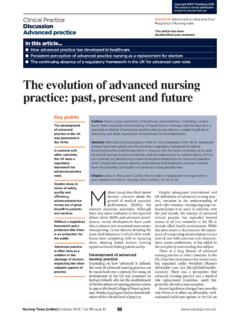

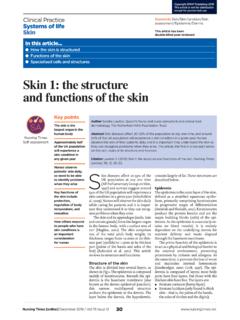


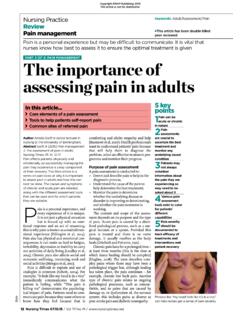
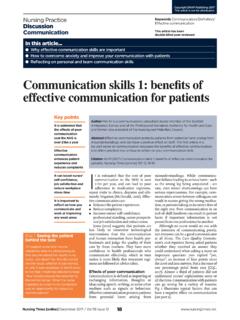
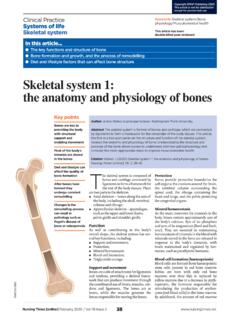




![Abstract arXiv:1506.02640v5 [cs.CV] 9 May 2016](/cache/preview/a/3/9/e/e/5/9/7/thumb-a39ee597b55a06b0e86e1cebc7152b1f.jpg)

